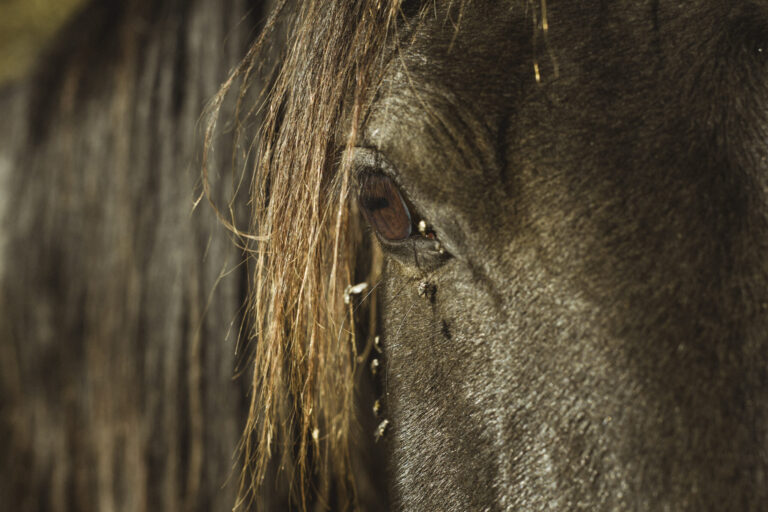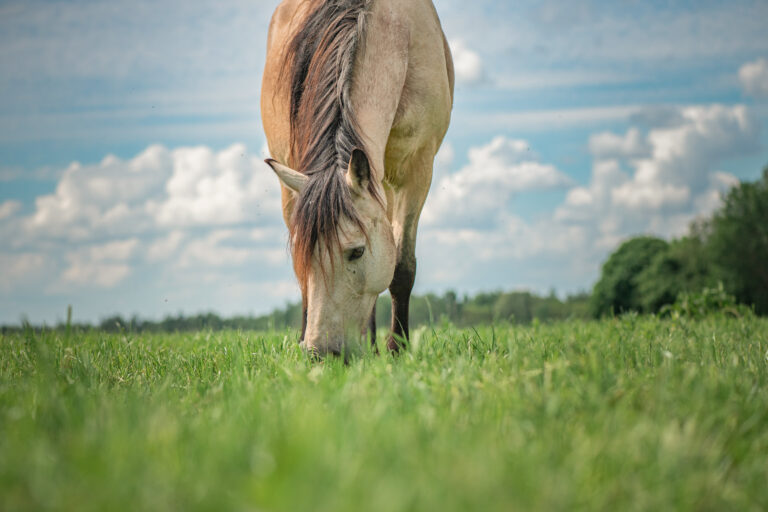
The Scoop From the Schools is a blog that brings news and information from vet schools and equine research facilities to those involved in the equine veterinary industry. This month we feature news from Washington State University, Michigan State University and the University of Florida’s College of Veterinary Medicine.

The Scoop From the Schools
is brought to you by Hilltop Bio.
Embracing Good Antimicrobial Stewardship in 90 Seconds

The age of good antimicrobial stewardship is upon us, demanding that health professionals—including equine practitioners—choose the right antibiotic for the right patient, at the right time, with the right dose, and for the right route, causing the least harm to the patient and future patients.
According to Washington State University researchers, “Antibiotic resistance is a leading health concern, and antibiotic stewardship principles encourage susceptibility testing before antibiotic treatment to ensure that an antibiotic is well matched to a putative pathogen.”
As we all known, however, this is easier said than done. Culture and susceptibility testing can take two, three or more days, and antibiotic therapy often needs to be initiated empirically before receiving those results.
Haluk Beyenal, PhD, and colleagues recently revealed an alternate technique for the rapid differentiation of antibiotic-susceptible and -resistant bacteria through mediated extracellular electron transfer in their article titled, “Rapid differentiation of antibiotic-susceptible and -resistant bacteria through mediated extracellular electron transfer” scheduled to be published in Biosensors and Bioelectronics.
Rather than relying on culture techniques, Beyenal and his colleagues “used a probe to directly measure the electrochemical signal of the bacteria, thereby measuring their metabolism and respiration and learning how they are faring long before they would be visible in culture. Looking at eight different strains of bacteria, the researchers were able to use the bacteria’s electric signal to determine in less than 90 minutes which were susceptible or resistant to the antibiotics,” explained Tina Hilding, Voiland College of Engineering and Architecture in the University’s press release.
The bacteria that are still metabolizing and “breathing” after antibiotic treatment are considered resistant.
“The researchers are now planning to engineer their probe to be convenient and standardized for clinicians to use and hope to commercialize it,” wrote Hilding.
This is a timely story considering that U.S. Antibiotic Awareness Week is November 18-24, 2021. Celebrate by sharing good antimicrobial stewardship principles and teaching others how to properly dispose of expired or unused antibiotics.
Southern Ticks are “Peaches” Compared to Northern Counterparts

According to Michigan State University researchers, southern ticks are peaches compared to northern ticks. The “refined” palates of southern ticks in addition to their meek demeanors appear to help protect both horses and their owners from Lyme disease.
The vector of Lyme disease in North America—the blacklegged tick Ixodes scapularis—is readily found in the northeastern and north central U.S., extending south into the Gulf states from Texas to Florida. The distribution of the tick vector, however, does not match the distribution of Lyme disease cases, as Lyme disease is rarely diagnosed in the southeastern U.S.
Several theories attempt to explain this north-south difference, including tick behavior and host preference. In the north, the primary reservoir host is the white-footed mouse, which is adept at transmitting Borellia burgdorferi. In the south, however, ticks might prefer a wider array of hosts, some of which might not be as effective as transmitting the bacterium as the white-footed mouse. This “dilution effect” essentially spares horses and humans from infection.
The sleek, smooth-scaled skink appears to be a preferred host to southern ticks. Because this lizard is exceedingly poor at transmitting B. burgdorferi, there are fewer ticks harboring the bacterium capable of causing Lyme disease.
In addition to host effects, the southern ticks’ behavior also benefits horses. The more aggressive northern ticks often climb to the top of leaf litter and “quest” on leaf tops and twigs to seek hosts. The more demure southern ticks, however, tend to remain beneath the surface of leaf litter.
“Therefore, a summer walk through the woods in the north results in direct exposure to host-seeking Ixodes ticks, while a similar walk in the south does not,” the researchers wrote in their article. “The tendency to quest high (at or above the leaf litter surface) is well correlated with incidence of human Lyme disease, likely accounting for the far greater number of tick bites by this species in northern compared to southern locales. This difference in host-seeking behavior might result from climatic factors because the warmer southern temperatures result in desiccation stress above the leaf litter, possibly providing a selective pressure for southern ticks to remain down below the surface.”
While this is good news for all of the horses in the southern U.S., it bodes poorly for northern horses who are experiencing a rise in infection prevalence.
To learn more about the epidemiology, testing and treating Lyme disease, take a peek at the most up-to-date guidelines published by the American Association of Equine Practitioners and the ACVIM Consensus Statement. Both indicate that while many horses become infected with Borellia burgdorferi following a tick bite, the percentage of horses that actually develop Lyme disease is unknown. R
ecognized syndromes associated with B. burgdorferi include neuroborreliosis, cutaneous pseudolymphoma and uveitis. Unlike humans, nonspecific signs such as lameness, poor performance and malaise might or might not develop in horses. Interpretation of testing must be approached cautiously as outline in those documents.
MacFarlane New Chair at University of Florida

The University of Florida (UF) College of Veterinary Medicine’s department of large animal clinical sciences welcomes Dianne McFarlane, DVM, PhD, DACVIM, as the new chair! McFarlane takes the throne December 15, 2021, after 16 years at Oklahoma State University’s College of Veterinary Medicine.
“I didn’t actually expect to make another move, but I was excited about the opportunity to chair the Large Animal Clinical Sciences at UF and for the new challenge this position brings,” said McFarlane.
She added, “I am looking forward to working with this excellent group of people. I think they are doing an exceptional job training new veterinarians and advancing veterinary research. It is an honor to be able to join the faculty there.”
As chair, one of McFarlane’s primary duties will be to provide leadership to faculty and staff.
“This department includes a diverse group of clinical faculty providing specialty veterinary care to both food animal and equine,” McFarlane said. “In addition, there are a number of veterinary extension faculty that serve a variety of animal industries in Florida. There are some exciting new initiatives underway, including the opening of the new UF veterinary clinic at the World Equestrian Center in Ocala,” she said.
McFarlane will also continue performing research in equine endocrinology and aging while at UF.
“We have a number of ongoing projects in PPID that we will be finishing up while at UF,” she noted. “We will also continue to develop new projects in areas where there is a need to best serve the aged horse population.”
In addition to her other mad skills, McFarlane is well-known for her public speaking.
“Dr. McFarlane is a dynamic speaker and scientist whose interests and talents will be a huge asset to us here at the UF College of Veterinary Medicine,” said the college’s dean, Dana N. Zimmel, DVM, DACVIM, in the official press release.
When asked if she will still have time for public speaking, McFarlane replied, “Yes, I will be speaking at VMX in Orlando in January 2022, as a matter of fact!”

The Scoop From the Schools
is brought to you by Hilltop Bio.




